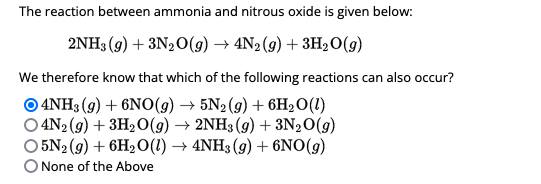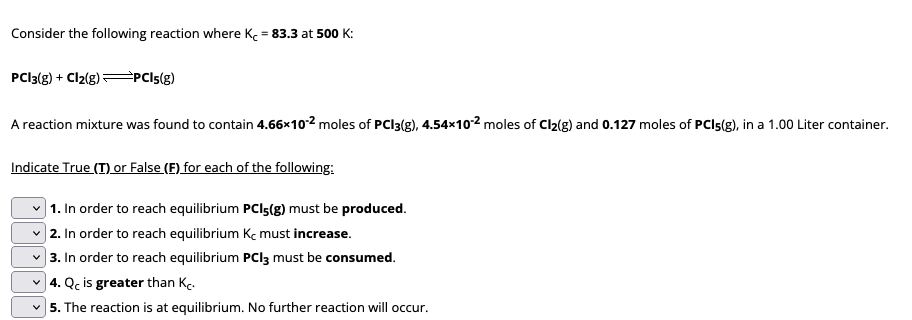1) An aqueous solution of nitric acid is standardized by titration with a 0.182 M solution of barium hydroxide. If 20.5 mL of base are required to neutralize 26.0 mL of the acid, what is the molarity of the nitric acid solution? M nitric acid 2) The hydronium ion concentration in an aqueous solution at 25°C is 8.8×10-2 M. The hydroxide ion concentration is M. The pH of this solution is . The pOH is .
1) An aqueous solution of nitric acid is standardized by titration with a 0.182 M solution of barium hydroxide. If 20.5 mL of base are required to neutralize 26.0 mL of the acid, what is the molarity of the nitric acid solution? M nitric acid 2) The hydronium ion concentration in an aqueous solution at 25°C is 8.8×10-2 M. The hydroxide ion concentration is M. The pH of this solution is . The pOH is .
Introductory Chemistry: A Foundation
9th Edition
ISBN:9781337399425
Author:Steven S. Zumdahl, Donald J. DeCoste
Publisher:Steven S. Zumdahl, Donald J. DeCoste
Chapter10: Energy
Section: Chapter Questions
Problem 89CP
Related questions
Question
1) An aqueous solution of nitric acid is standardized by titration with a 0.182 M solution of barium hydroxide.
If 20.5 mL of base are required to neutralize 26.0 mL of the acid, what is the molarity of the nitric acid solution?
M nitric acid
2) The hydronium ion concentration in an aqueous solution at 25°C is 8.8×10-2 M.
The hydroxide ion concentration is M.
The pH of this solution is .
The pOH is .

Transcribed Image Text:The reaction between ammonia and nitrous oxide is given below:
2NH3(g) + 3N2O(g) → 4N₂(g) + 3H₂O(g)
We therefore know that which of the following reactions can also occur?
O4NH3(g) + 6NO(g) → 5N₂(g) + 6H₂O (1)
O4N2(g) + 3H₂O(g) → 2NH3(g) + 3N₂O(g)
O5N2(g) + 6H₂O(l) → 4NH3 (9) + 6NO(g)
O None of the Above

Transcribed Image Text:Consider the following reaction where K = 83.3 at 500 K:
PC13(g) + Cl2(g) →PCI5(g)
A reaction mixture was found to contain 4.66x10-2 moles of PCI3(g), 4.54×102 moles of Cl₂(g) and 0.127 moles of PCI5(g), in a 1.00 Liter container.
Indicate True (T) or False (F) for each of the following:
1. In order to reach equilibrium PCI-(g) must be produced.
2. In order to reach equilibrium Kc must increase.
3. In order to reach equilibrium PCI3 must be consumed.
4. Qc is greater than K.
5. The reaction is at equilibrium. No further reaction will occur.
Expert Solution
This question has been solved!
Explore an expertly crafted, step-by-step solution for a thorough understanding of key concepts.
Step by step
Solved in 3 steps with 2 images

Knowledge Booster
Learn more about
Need a deep-dive on the concept behind this application? Look no further. Learn more about this topic, chemistry and related others by exploring similar questions and additional content below.Recommended textbooks for you

Introductory Chemistry: A Foundation
Chemistry
ISBN:
9781337399425
Author:
Steven S. Zumdahl, Donald J. DeCoste
Publisher:
Cengage Learning

Chemistry: The Molecular Science
Chemistry
ISBN:
9781285199047
Author:
John W. Moore, Conrad L. Stanitski
Publisher:
Cengage Learning

General Chemistry - Standalone book (MindTap Cour…
Chemistry
ISBN:
9781305580343
Author:
Steven D. Gammon, Ebbing, Darrell Ebbing, Steven D., Darrell; Gammon, Darrell Ebbing; Steven D. Gammon, Darrell D.; Gammon, Ebbing; Steven D. Gammon; Darrell
Publisher:
Cengage Learning

Introductory Chemistry: A Foundation
Chemistry
ISBN:
9781337399425
Author:
Steven S. Zumdahl, Donald J. DeCoste
Publisher:
Cengage Learning

Chemistry: The Molecular Science
Chemistry
ISBN:
9781285199047
Author:
John W. Moore, Conrad L. Stanitski
Publisher:
Cengage Learning

General Chemistry - Standalone book (MindTap Cour…
Chemistry
ISBN:
9781305580343
Author:
Steven D. Gammon, Ebbing, Darrell Ebbing, Steven D., Darrell; Gammon, Darrell Ebbing; Steven D. Gammon, Darrell D.; Gammon, Ebbing; Steven D. Gammon; Darrell
Publisher:
Cengage Learning

Chemistry: Principles and Reactions
Chemistry
ISBN:
9781305079373
Author:
William L. Masterton, Cecile N. Hurley
Publisher:
Cengage Learning

Chemistry
Chemistry
ISBN:
9781305957404
Author:
Steven S. Zumdahl, Susan A. Zumdahl, Donald J. DeCoste
Publisher:
Cengage Learning

Chemistry & Chemical Reactivity
Chemistry
ISBN:
9781337399074
Author:
John C. Kotz, Paul M. Treichel, John Townsend, David Treichel
Publisher:
Cengage Learning